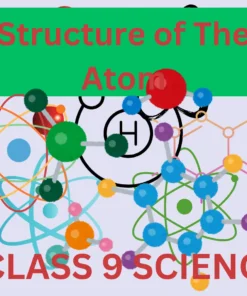Motion CLASS 9 SCIENCE
$40.00 Original price was: $40.00.$25.00Current price is: $25.00.
Basics of Motion
Motion is a fundamental concept in physics, referring to the change in position of an object over time. It plays an integral role in our daily experiences, illustrating how various objects and living beings interact with their environments. There are several types of motion, the most common being linear, rotational, and periodic motion. Linear motion occurs when an object moves along a straight path, such as a car traveling on a road. Rotational motion involves an object spinning around an axis, like the blades of a fan. Periodic motion is characterized by repetitive movements over equal intervals, like the swinging of a pendulum.
Basics of Motion
Motion is a fundamental concept in physics, referring to the change in position of an object over time. It plays an integral role in our daily experiences, illustrating how various objects and living beings interact with their environments. There are several types of motion, the most common being linear, rotational, and periodic motion. Linear motion occurs when an object moves along a straight path, such as a car traveling on a road. Rotational motion involves an object spinning around an axis, like the blades of a fan. Periodic motion is characterized by repetitive movements over equal intervals, like the swinging of a pendulum.
Understanding motion also requires familiarity with key terms that describe various aspects of movement. Distance is defined as the total path covered by an object, whereas displacement refers to the shortest route separating an object’s starting and ending points. These two concepts highlight the difference between the actual length traveled and the straight-line distance between two points.
Additionally, speed and velocity are crucial in comprehending motion. Speed, a scalar quantity, measures how fast an object is moving, while velocity, a vector quantity, indicates both the speed and direction of movement. For example, when a cyclist travels at 15 km/h east, this expression captures both her speed and directional motion. Acceleration is another pivotal term, representing the rate of change of velocity over time, indicating how quickly an object speeds up, slows down, or changes direction.
Moreover, motion can be categorized into uniform and non-uniform types. Uniform motion describes a scenario in which an object travels equal distances in equal intervals of time. In contrast, non-uniform motion occurs when an object covers different distances in equal periods, demonstrating fluctuations in speed. Grasping these foundational principles of motion empowers students to better understand and analyze physical phenomena encountered in real-world applications.
Graphical Representation of Motion
Graphical representation of motion is a crucial aspect of understanding how objects move. In physics, the relationship between distance, time, and velocity can be effectively illustrated using various types of graphs. Two commonly utilized graphs in motion analysis are distance-time graphs and velocity-time graphs. Each graph serves its distinct purpose, allowing one to comprehend the motion characteristics of an object clearly.
A distance-time graph provides a visualization of how the distance traveled by an object changes over time. The x-axis represents time, while the y-axis indicates distance. The slope of the line on this graph signifies the speed of the object. A steeper slope indicates a higher speed, while a horizontal line represents an object at rest. This type of graph helps students analyze different motions, such as uniform motion, where the slope remains constant, or accelerated motion, characterized by varying slopes.
On the other hand, a velocity-time graph illustrates how an object’s velocity changes in relation to time. In these graphs, the x-axis is time, while the y-axis represents velocity. Here, the slope indicates acceleration. A horizontal line reflects constant velocity, while an upward slope shows positive acceleration and a downward slope indicates deceleration. This graph provides insight into how quickly an object speeds up or slows down, offering a deeper understanding of its motion.
Practicing the interpretation of these graphs through real-world examples reinforces theoretical concepts. For instance, analyzing the motion of a car during a trip can help students visualize speed changes and apply their knowledge practically. Exercises that involve interpreting various graphs will prepare students for understanding more complex scenarios in the realm of physics, showcasing the significance of graphical representation in comprehending motion. In conclusion, these visual tools are essential for a holistic understanding of motion in scientific studies.
Be the first to review “Motion CLASS 9 SCIENCE” Cancel reply
Related products
CLASS 9
CLASS 9
Uncategorized











Reviews
There are no reviews yet.